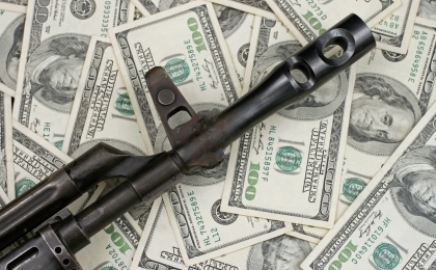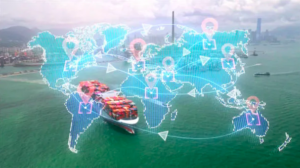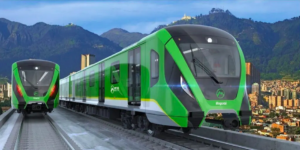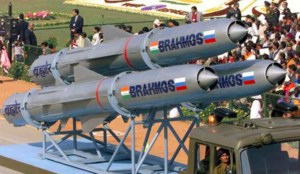Demonstrating a terrorist financing typology, the Financial Action Task Force (FATF) documented a case study involving an alternative remittance system (ARS) operator (or hawala facilitator) in the United States seeking to transfer funds to his Pakistani counterpart. The remittance operator colluded with a Pakistani exporter, who significantly over-invoiced a US importer for the purchase of surgical goods. to cover the extra cost related to the over-invoicing, the remittance operator transfers funds to the US importer. The Pakistani exporter uses the over-invoiced amount to settle the US operator’s outstanding account with his Pakistani counterpart. This case study illustrates how the international trade system is subject to a wide range of vulnerabilities that can be exploited by criminal organisations and terrorist financiers.
Given the growth in world trade, this sort of money laundering activity in which proceeds of crime are disguised and moved via trade transactions, is becoming a major terrorist financing source and vulnerability. Categorised as trade-based money laundering (TBML), it is one of the most sophisticated methods of money laundering in which the illicit funds are transferred under the garb of trade transactions. By some estimates, almost 80% of the US$1 trillion illicit financial flowing out of developing economies were due to TBML. It involves over or under-invoicing (mis-invoicing), over-shipping or short-shipping, ghost-shipping, shell companies, multiple invoicing, and black-market trading. Among all the means of legitimising dirty money, these methods of TBML are among the hardest to detect. The exact structures that have been put in place to prevent fraud, documentation, customer/invoicing processes, and open trade accounts are cleverly manipulated by criminals to conceal the illegitimate movement of money.
While considerable attention has been paid to the use of cheques, wire transfers, and the physical movement of banknotes using methods such as cash couriers and bulk cash smuggling as means to disguise the origins of illicit money, limited attention has been focused on trade-related activities.
Driven by a variety of factors including robust economic growth, a relatively weak regulatory environment, and the presence of sophisticated transnational criminal networks, TBML has been on the rise globally. TBML is difficult to tackle because of the complications of multinational companies operating in cross-jurisdictional trade pathways. Most important according to the FATF, “as the standards applied to other money laundering techniques become increasingly effective, the use of trade-based money laundering can be expected to become increasingly attractive.”
A recent study of China’s Belt and Road Initiative (BRI) on trade-based money laundering (TBML) and illicit supply chains by Global Financial Integrity and King’s College London has found that the BRI transport corridors are fuelling illicit financial flows (IFFs) and criminal exploitation. According to the report, Everything Everywhere All at Once, already a major supplier of deceptive counterfeit products and illicit commodities, with expansion of its BRI transport infrastructure an estimated US$294 billion to US$736 billion is laundered annually through the Chinese economy. With rising trade within the BRI corridor, the proliferation of counterfeit and illicit goods disguised as licit goods has also heightened.
The magnitude of TBML has never been systematically examined. So, it is also difficult to estimate what portion of the illicit value was transferred towards terror financing. According to a 2016 US Congressional Research Service report, TBML has not been a dominant method for terrorist financing. However, the US State Department’s annual report on money laundering and financial crimes reports that TBML schemes “might support sanctions-evasion networks and terrorist groups in Afghanistan, Pakistan, Iran, Iraq, Syria, Yemen, and Somalia.” TBML is a terrorism-related concern in certain countries particularly as a technique used by hawala brokers in conjunction with corrupt customs and immigration officials. Hawala continues to be the predominant fund transfer mechanism in Pakistan where the formal banking system has limited presence. The report states that the Afghanistan / Pakistan Transit Trade Agreement encompasses trade routes that are known for TBML and that “pass through key locations where insurgent and terrorist groups operate.” The transit trade is used in trade-based money laundering, value transfer, and in counter-valuation or the process of settling accounts between hawaladars.
There is ample opportunity for terrorist groups to exploit the international trade system, with low risk of being caught. As a significant amount of goods and services are financed by banks and other financial institutions, the responsibility of banks in exercising due diligence before remitting any amount must not be overlooked. In fact, in several cases, it has been found that personnel at banks and financial institutions are involved in the provision of trade financing. Free trade zones (FTZs), offering free trade environments with a minimum level of regulation are likely to become especially vulnerable to TBML. In its 2010 report, the FATF has noted that an expansion in the number of FTZs is “highly attractive for illicit actors who take advantage of this relaxed oversight to launder the proceeds of crime and finance terrorism”.
It was to a large extent because of the impact of unregulated FTZs that the FATF added UAE to its AML/CFT grey list earlier this year. In fact, Dubai with approximately 30 free trade zones, is a haven for trade-based money laundering. Dubai innumerable FTZs allow businesses to disguise the proceeds of crime via over and under invoicing, multiple invoicing, and falsifying of other trade documentation. This environment provides significant opportunities for regulatory arbitrage and for groups – including al-Qaeda, the Taliban, Lone Wolves, D-Company, and Mexican drug cartels – to use Dubai as a conduit for their money laundering, smuggling, and terrorism financing operations.
India also faces various money laundering vulnerabilities such as informal financing networks, complex onshore and offshore corporate structures, as well as enforcement capacity constraints. And now, TBML through gold purchases, charities, election campaigns, and educational programs is on the rise by companies to evade capital controls.
Illicit financial flows can have a detrimental effect on a country’s economy by removing revenue from governments which can potentially be used for various development initiatives. While governments are beginning to share import and export information in order to detect anomalies in their trade data, in accordance with FATF standards, access to these trade databases is not yet universal. There is a need for greater cooperation between customs and law enforcement agencies between foreign counterparts in this area.
As countries prioritise the digitization of their financial system to reduce corruption and increase the tax base, they will also have to take a smarter approach towards curtailing illicit financial activity from trade data manipulation. When trade flows outside the normal confines of the payment system, and transactions are carried out without bank intervention, the divergence of systems and processes allows fraudsters to find a chink in the financial institutions’ armour. For now, more needs to be done at the international level to understand the phenomenon of TBML. Countries could simply begin by making case studies and red flagging indicators, to raise general awareness about TBML.
Picture credits: Sudan Tribune






Be First to Comment